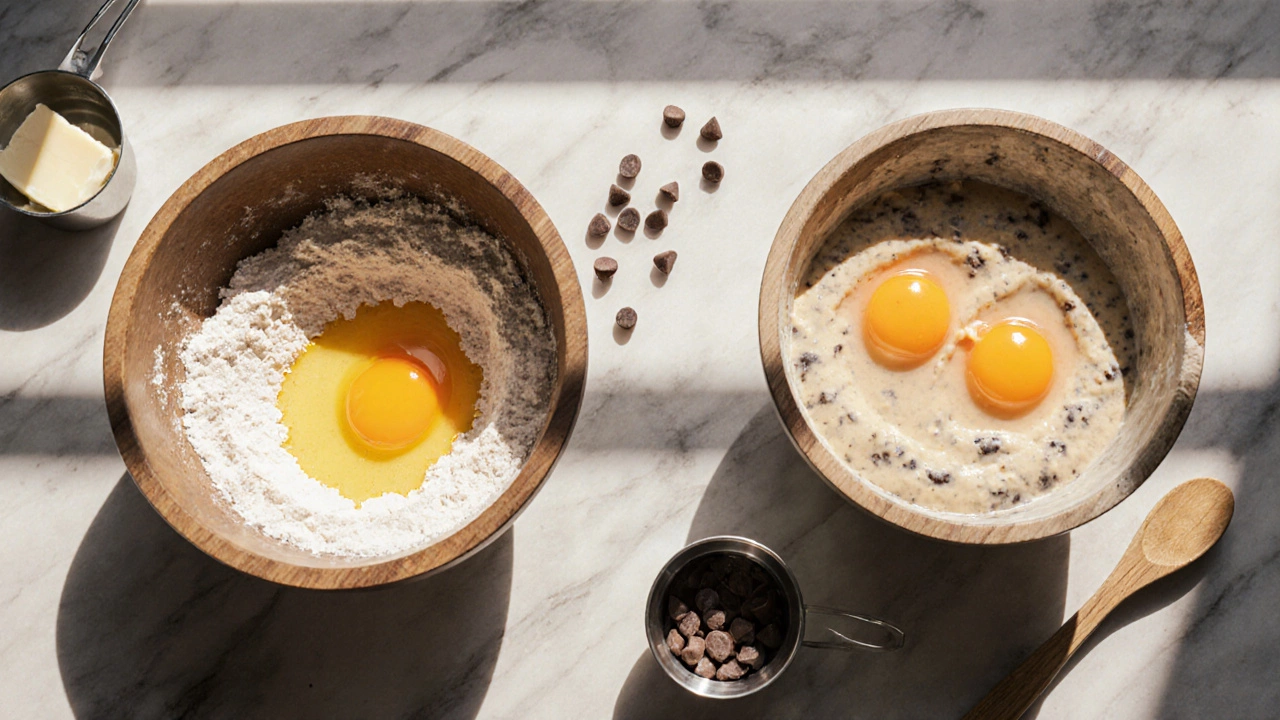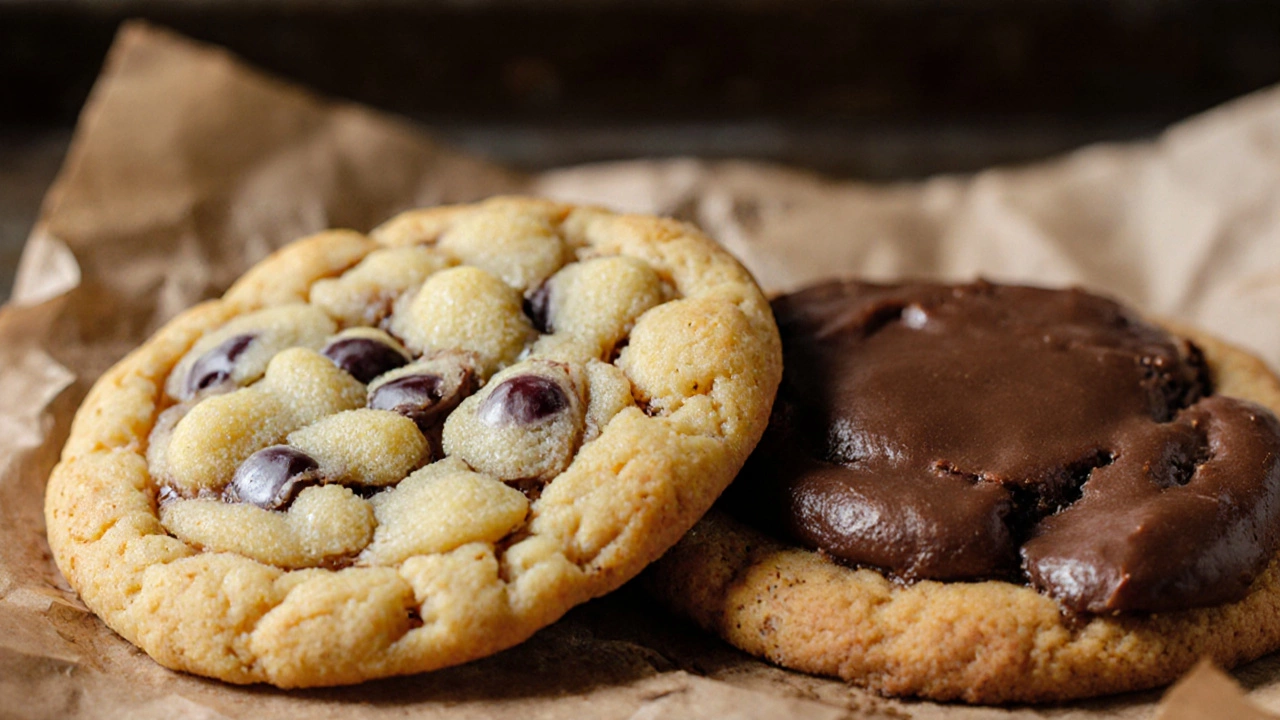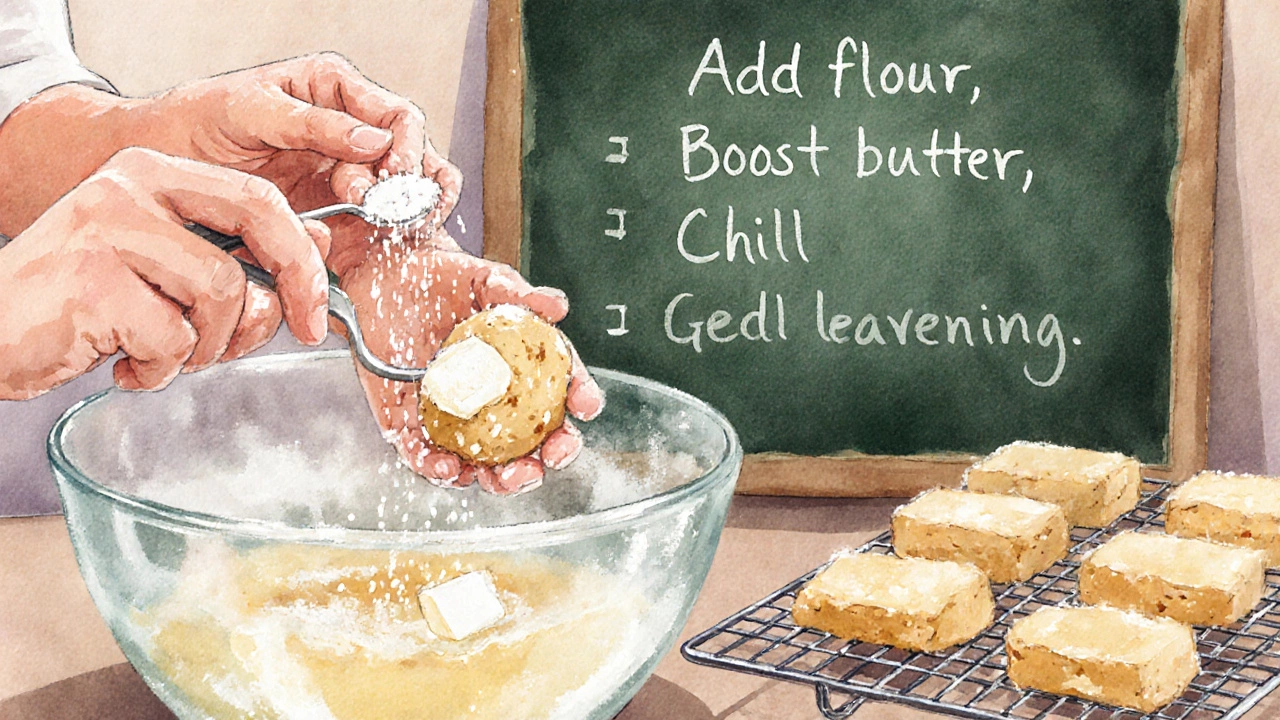
Cookie Egg Quantifier
Expected Cookie Characteristics
- Using 2 eggs makes cookies moister and less spreadable.
- Try adding 1-2 tbsp flour if dough feels too wet.
- For thicker cookies, consider chilling the dough before baking.
Ever wondered why a recipe calls for a single egg and what would happen if you tossed in two? In the world of cookies, that extra egg can completely rewrite the crumb, spread, and even flavor. This guide walks you through the science, the practical outcomes, and the fixes you need when the egg count goes off‑track.
Quick Takeaways
- One egg gives most cookies a balanced chew‑and‑crisp texture.
- Two eggs add moisture, create a more cake‑like crumb, and reduce spreading.
- Expect a richer flavor and a slightly darker browning.
- If the dough feels too wet, boost flour by 1‑2Tbsp or cut back on butter.
- To rescue over‑egged cookies, chill the dough or add a pinch of baking soda.
How Eggs Work in Cookie Dough
Egg is a high‑protein, fat‑rich ingredient that acts as a binder, leavening aid, and moisture source in baked goods. When mixed into cookie batter, the proteins coagulate as the dough heats, setting the structure, while the water in the egg adds steam that can lift the cookie.
At the same time, the yolk contributes fat and emulsifiers, which coat flour particles, tenderizing the crumb. The white, mostly water and protein, adds lift and helps the cookie spread evenly.
What Changes When You Double the Egg
Adding a second egg doesn’t just double everything - it shifts the balance between wet and dry components, and between structure‑building proteins and tenderizing fats.
- Moisture boost: Two eggs introduce roughly 40ml more liquid, making the dough softer and less likely to spread during baking.
- Texture shift: The extra protein creates a stronger network, yielding a more cake‑like, puffed crumb instead of the classic thin‑and‑crispy edge.
- Flavor depth: Egg yolk’s lipids carry flavor molecules, so cookies become richer, sometimes with a subtle eggy note if the dough isn’t balanced with enough sugar or vanilla.
- Browning: More sugars react with the additional fats and proteins, leading to a darker, slightly glossy surface.
- Spread reduction: With more liquid binding the fat, the cookie holds its shape better, producing a thicker, rounder final product.

When Using Two Eggs Makes Sense
If you’re aiming for a soft, cake‑style cookie-think chocolate chip cake‑cookies or snickerdoodles with a tender interior-doubling the egg is a deliberate choice. Recipes that already feature a high butter‑to‑flour ratio or that incorporate a lot of add‑ins (nuts, dried fruit) often call for two eggs to keep everything from drying out.
Also, when you want a cookie that can hold a thick layer of frosting or a generous spoonful of jam, the extra structure from two eggs prevents the base from crumbling.
How to Fix Over‑Egged Cookies
If you accidentally used two eggs in a recipe meant for one, don’t panic. Small tweaks can bring the dough back into balance.
- Add more dry flour: Sprinkle in 1‑2Tbsp of all‑purpose flour, mix, and test the dough’s consistency. It should feel slightly tacky but not sticky.
- Boost the fat: An extra teaspoon of softened butter or a splash of coconut oil can re‑introduce the richness that the extra egg diluted.
- Chill the dough: Refrigerate for 30minutes. The chilled fat solidifies, limiting spread and improving shape.
- Adjust leavening: If the cookies look too puffy, cut back on baking soda or powder by a quarter teaspoon to temper the extra rise.
These fixes are especially useful for single‑batch experiments; for a large batch, it’s often easier to start over with the correct egg amount.
Balancing the Rest of the Recipe
Eggs don’t work in isolation. When you up the egg count, consider these companion adjustments:
- Sugar: Slightly increase sugar (by about 1‑2Tbsp) to counterbalance the extra moisture and maintain sweetness.
- Butter: Add an extra half‑teaspoon of butter for each extra egg to keep the mouthfeel buttery.
- Leavening agents: Reduce baking soda by ¼tsp per extra egg to avoid excessive rise.
- Flavorings: Boost vanilla, cinnamon, or espresso powder by a dash; the richer base can handle bolder flavors.

One Egg vs. Two Eggs - Quick Comparison
| Aspect | 1 Egg | 2 Eggs |
|---|---|---|
| Moisture | Standard level, dough feels firm | Higher, dough becomes softer |
| Spread | Moderate to high spread | Reduced spread, thicker cookie |
| Texture | Chewy edge, crisp center | Cake‑like, soft interior |
| Flavor | Balanced vanilla/sugar notes | Richer, slightly eggy undertone |
| Browning | Light golden | Darker, glossy surface |
Mini FAQ
Frequently Asked Questions
Will two eggs make my cookies too cakey?
If the base recipe is already low‑fat and low‑sugar, adding a second egg can push the crumb toward cake‑like. Balancing with a bit more butter or reducing the flour helps retain a classic cookie bite.
Can I use just egg whites instead of a whole second egg?
Yes. Egg whites add moisture and lift without the extra fat from the yolk, so you’ll get a slightly drier, more airy cookie than with a full egg.
What’s the ideal bake time when I double the egg?
Because the cookie stays thicker, increase the bake time by 1‑2minutes at the same temperature. Keep an eye on the edges; they should turn golden, not dark.
Will extra egg affect gluten development?
The added liquid can hydrate more flour, slightly strengthening gluten. That’s why the dough feels softer, but the extra protein from the egg also counteracts excess chewiness.
Can I rescue a batch that’s already baked with too many eggs?
If the cookies are overly cakey, crumble them and re‑mix into a dough for bars or brownies, or sandwich them with frosting to mask texture.